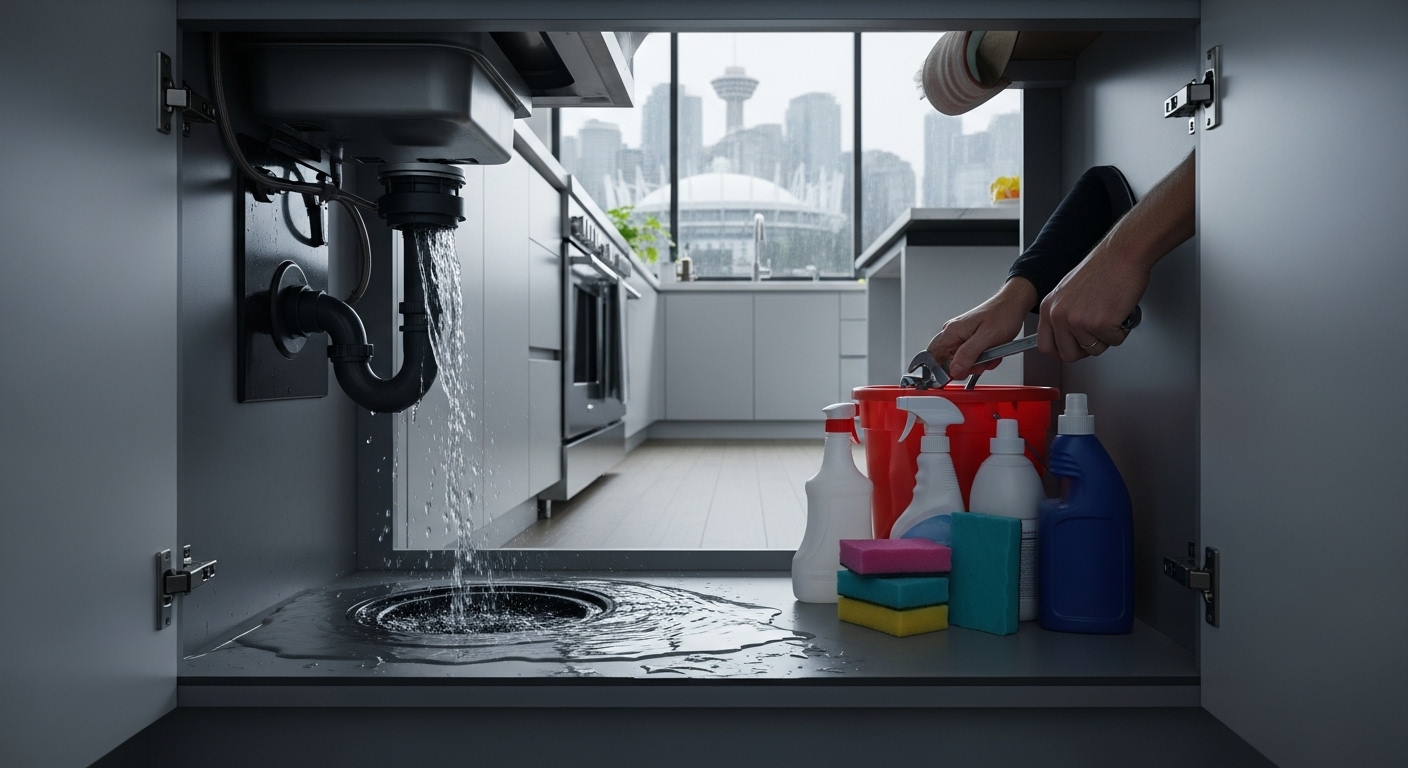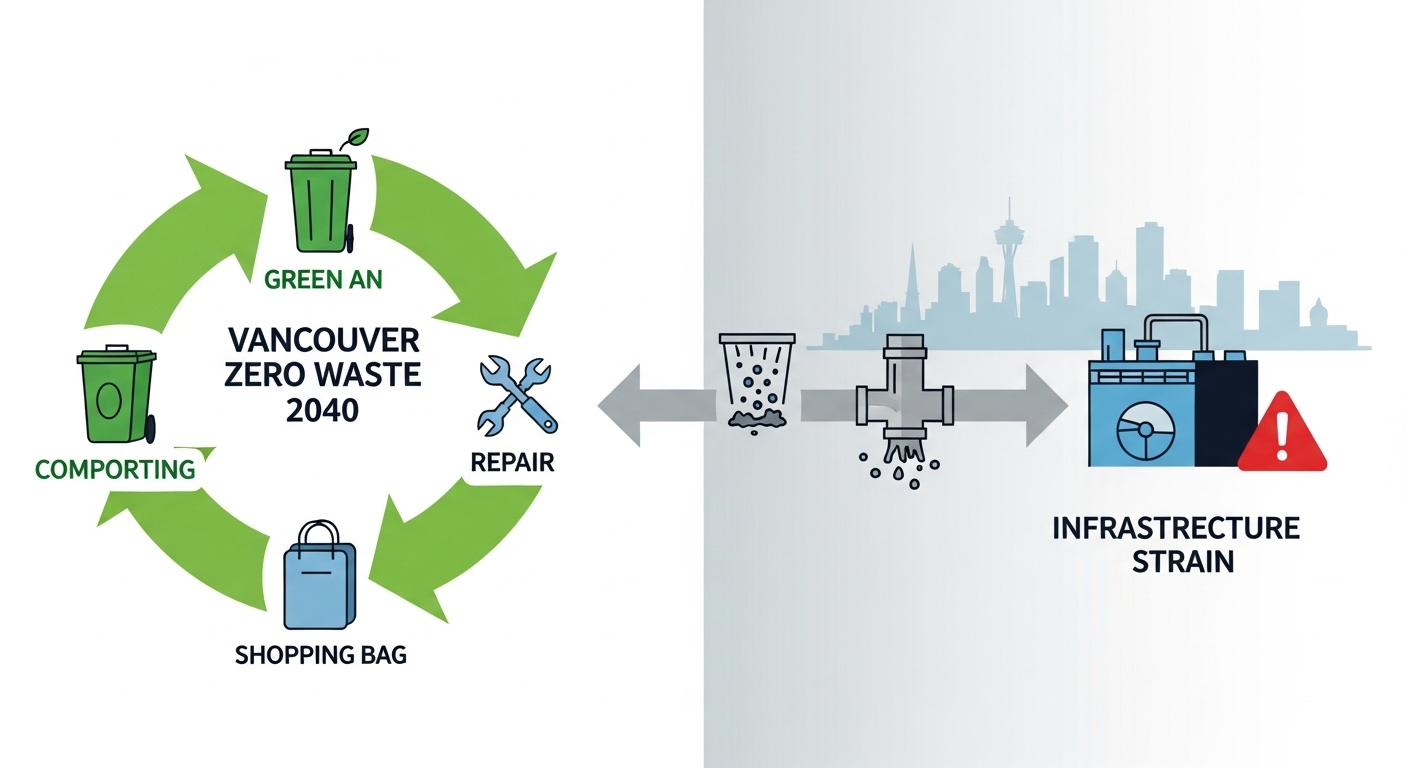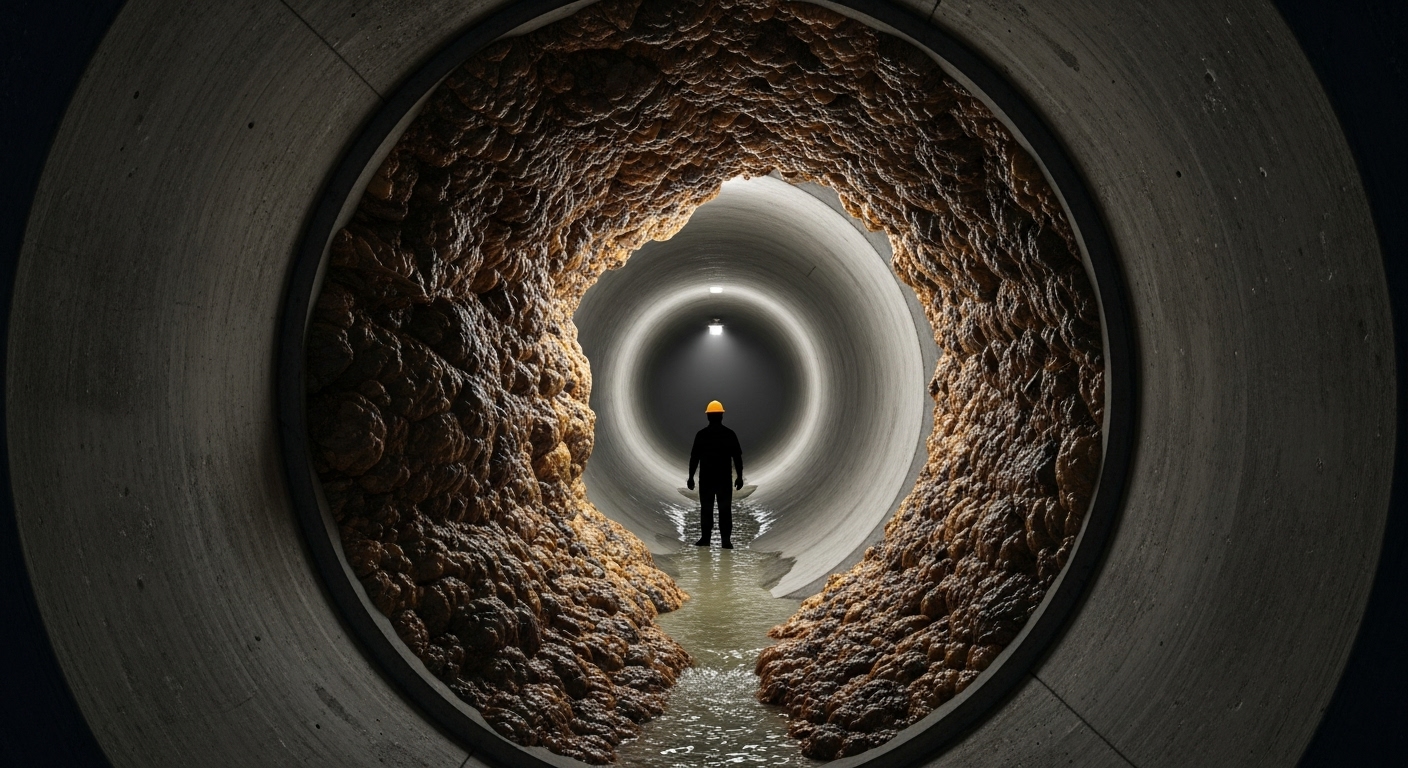Dealing with a broken garbage disposal in Vancouver’s evolving zero waste landscape? Navigate the complex intersection of municipal compliance, environmental responsibility, and household economics with our comprehensive guide to repair, replacement, and eco-friendly alternatives that align with the city’s ambitious 2040 sustainability goals.
Picture this: It’s Tuesday morning, you’re rushing to get the kids ready for school, and suddenly your garbage disposal decides to stage a revolt. The familiar grinding sound is replaced by an ominous humming, and now there’s a pool of mysterious water under your kitchen sink. In the old days, this would be a simple call to your local plumber or a weekend DIY project. But welcome to Vancouver 2025, where your broken garburator isn’t just a plumbing problem—it’s potentially a compliance nightmare that could land you on the wrong side of the city’s Zero Waste 2040 initiative.

Vancouver’s ambitious environmental policies have transformed what used to be routine appliance maintenance into a complex decision involving municipal regulations, environmental impact, and surprisingly hefty hidden costs. The city’s proposed ban on garbage disposals, combined with existing food waste diversion requirements, means that innocent-looking broken appliance in your kitchen represents a convergence of policy compliance, environmental stewardship, and household economics that previous generations of homeowners never had to navigate. Whether you’re a long-time Vancouverite watching your neighborhood transform or a newcomer trying to understand why your real estate agent mentioned “garburator regulations” during your home tour, this situation affects thousands of local households grappling with aging appliances in an evolving regulatory environment.
The stakes extend far beyond simple convenience. Vancouver’s Zero Waste 2040 plan explicitly targets food waste disposal systems as infrastructure problems that strain municipal wastewater treatment, contribute to costly fatberg formation, and contradict circular economy principles that prioritize composting over disposal. Meanwhile, the economics of repair versus replacement have shifted dramatically due to supply chain issues, specialized parts pricing, and the reality that installing a new disposal in a Vancouver condo can easily cost $1,000+ when you factor in all the hidden logistics, removal, and compliance considerations that don’t appear on appliance store price tags.
Key Outtakes
- Vancouver City Council passed a motion in July 2025 proposing to ban garbage disposals in new construction, with potential expansion to existing homes, making repair-vs-replacement decisions critically time-sensitive for compliance planning
- Professional garbage disposal repair in Vancouver costs $50-$400 depending on the problem, often representing better economics than full replacement when hidden costs (removal, delivery, installation, condo logistics) can exceed $700
- Food waste has been banned from Vancouver garbage since 2015, meaning broken disposals cannot simply redirect waste to trash—homeowners must use Green Bin composting or approved alternatives like Sepura systems
- Vancouver’s wastewater infrastructure faces $2.7 million annually in grease-related damage, with garburators contributing to fatbergs and treatment system strain that drives the regulatory push toward elimination
- Alternative food waste systems including municipal composting, bokashi fermentation, and electric composters provide compliance pathways while supporting Zero Waste 2040 environmental goals

Understanding Vancouver’s Zero Waste 2040 Initiative and Its Impact on Household Appliances

Vancouver’s vision for becoming a zero waste community by 2040 represents one of Canada’s most ambitious environmental policy frameworks, establishing a comprehensive system that fundamentally reconceptualizes waste management from a disposal-focused model to a circular economy approach. The Zero Waste 2040 plan explicitly commits the city to conserving resources, preventing waste of all types including food waste at all points from farm to table, composting inedible food or converting it into fuel, and prioritizing repair and reuse of products and materials before recycling becomes the default option. This strategic framework directly challenges conventional household appliances that previously performed routine kitchen functions, such as in-sink garbage disposals, which have operated largely outside the city’s waste management system by diverting food waste into municipal wastewater treatment facilities rather than toward composting or circular economy solutions.
The initiative creates a regulatory environment where appliance choice becomes an environmental compliance issue, forcing homeowners to reconsider not only whether to repair broken disposals but whether maintaining these appliances aligns with municipal policy objectives and personal environmental values. Unlike traditional appliance maintenance decisions that focused purely on cost and convenience, Vancouver homeowners now must evaluate repair and replacement options through the lens of municipal compliance, environmental impact, and long-term regulatory trajectory. This shift represents a fundamental change in how we think about household infrastructure, where kitchen appliances become components of larger environmental systems rather than isolated convenience devices.
The regulatory complexity extends beyond simple prohibition, as overlapping bylaws governing solid waste disposal, sewer system usage, and environmental protection create multiple compliance layers that homeowners must navigate. Food waste disposal through garburators intersects with wastewater treatment regulations, solid waste diversion requirements, and emerging environmental policies that prioritize organic material recovery over disposal. For homeowners with existing disposals, this creates a transitional period where current practices remain legal but increasingly misaligned with municipal environmental priorities and potential future restrictions.
Understanding this regulatory environment becomes essential for making informed decisions about appliance repair, as investments in garburator maintenance or replacement may face shortened useful lifespans if restrictions take effect within several years of service. The environmental rationale behind these policies—reducing wastewater treatment burden, preventing infrastructure damage, and supporting composting systems—provides context for why seemingly routine appliance decisions have become matters of environmental compliance and community sustainability planning.
The Current Regulatory Status of Garbage Disposals in Vancouver
In July 2025, Vancouver City Council advanced a significant motion that formally proposes prohibiting in-sink garbage disposal units in new construction, with potential expansion to existing homes through amendments to the Building By-law and Solid Waste By-law. The motion, submitted by Councillor Fry, identifies garburators as “a drain on resources and resources down the drain,” citing the substantial operational and infrastructure costs these devices impose on Metro Vancouver’s wastewater treatment systems. The council motion specifically notes that garburators add significant loads of organic solids and nutrients to wastewater systems, increasing strain on treatment facilities and potentially causing clogs and higher water usage compared to normal household drainage patterns.
The financial impact driving this regulatory change is substantial and measurable. Metro Vancouver currently spends more than $2.7 million annually fixing grease damage in the sewer system, with a significant portion attributable to food waste from garbage disposals creating blockages known as fatbergs—solidified combinations of fats, oils, grease, and non-biodegradable items that require intensive labor and specialized equipment to remove. These fatbergs create catastrophic blockages requiring emergency intervention, with some growing to the size of city buses and requiring specialized cutting equipment, bacterial treatments, and extensive labor to clear from municipal infrastructure.

The regulatory context becomes increasingly stringent when considering that food scraps have been banned from solid waste disposal in Metro Vancouver since January 2015, creating a regulatory paradox where homeowners cannot dispose of food waste via garbage, yet many possess garburators that were legal and common when installed. This regulatory evolution represents the culmination of a broader Canadian trend, with numerous municipalities having already implemented garburator bans, including Toronto (2002), Victoria (2002 for industrial use), Ottawa (2003), Kingston (2008), Barrie (2012), and Squamish (2016).
For Vancouver homeowners, this regulatory trajectory creates immediate decision-making pressure around broken or aging disposals. While existing units remain legal during the transitional period, making expensive repairs or replacement investments in devices that may face future restrictions requires careful evaluation of regulatory timelines, household needs, and alternative systems. The motion directs city staff to report back with specific bylaw amendments, suggesting formal restrictions could take effect within 1-3 years depending on the legislative process and public consultation requirements.
The proposed restrictions also extend beyond simple prohibition to address the infrastructure concerns driving the policy change. When food waste is ground and flushed through plumbing systems, it enters wastewater containing high concentrations of organic solids, fats, and nutrients that require significantly more intensive treatment than typical household greywater and blackwater. At the Iona Island Wastewater Treatment Plant, which processes Vancouver’s liquid waste, operators face escalating challenges maintaining primary treatment systems designed and constructed in 1963, with the facility scheduled for a massive upgrade from primary to tertiary treatment at a cost of $10 billion by 2025.
Economic Analysis of Repair and Replacement Costs in Vancouver
The economics of garbage disposal repair in

